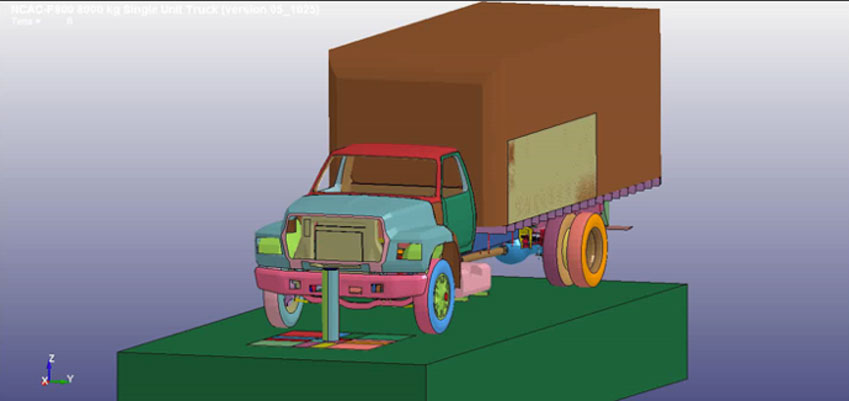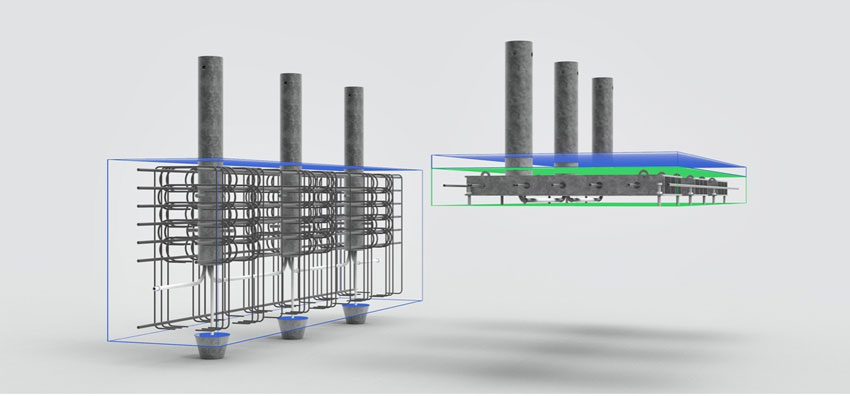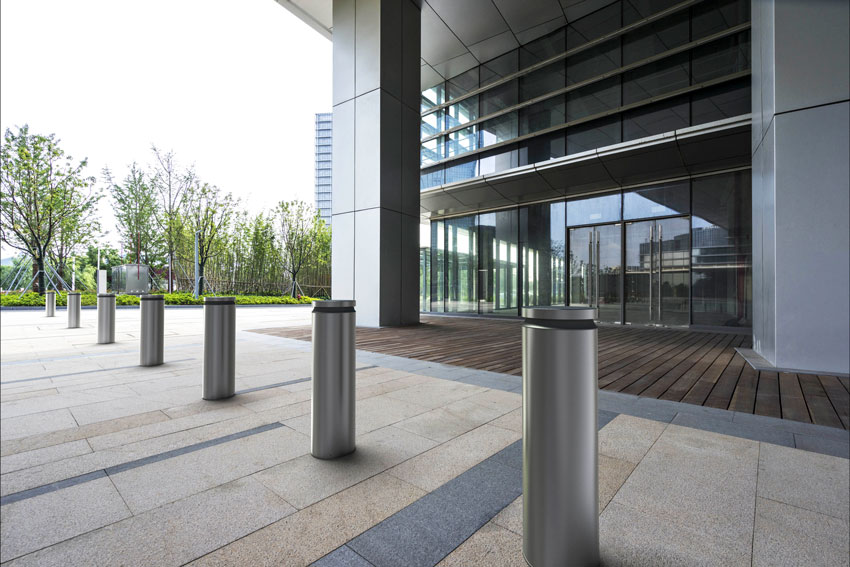Designed to Protect
Testing in the Digital Age: Finite Element Analysis
Security bollards are increasingly being tested using a Finite Element Analysis (FEA) by a professional engineering consultant. FEA is a software-based tool commonly employed in the automotive industry and used extensively for crash test simulations. Manufacturers can test security bollards in FEA within a very demanding set of impact criteria. Tests are able to simulate a bollard set in permanent concrete footings and struck by a vehicle at a 90-degree impact. The vehicle, speed, and product criteria can be customized to accurately create the impact simulation and assess the bollard’s ability to stop a range of vehicles under a range of conditions.
Using FEA can be very beneficial. Product testing is less costly and faster than physical testing methods. Multiple simulations of the same impact can be run to prove conformance, as opposed to physical crash testing of products, which allows for a single test only. FEA also reduces waste, as trucks, products, and site excavation are not needed for testing or analysis.

Photo courtesy of Forms+Surfaces
Finite Element Analysis (FEA) is a software-based tool that is increasingly becoming a universally accepted way of determining bollard performance.
WHAT LIES BENEATH: FOUNDATION ENGINEERING PROVIDES THE GROUNDWORK FOR TRUE SECURITY
A bollard’s crash penetration testing performance, under any standard, is about how well the bollard keeps the load carried in a vehicle away from the building, pedestrian area, or perimeter. A security bollard forms a barrier system used to restrict movement of vehicles around buildings. Most critical to this impact resistance of the bollard is its foundation.
Most security bollards are comprised of three parts: the exterior or decorative bollard sleeve, its security core, and the associated bollard foundation. While the security core’s performance is the element measured in testing, that performance is supported and provided by the foundation. In order to provide adequate protection, security cores must be paired with an appropriate and approved engineered foundation.

Photo courtesy of Forms+Surfaces
Deep mount versus shallow mount applications.
Foundation Engineering Overview
Bollard foundations may be either single or strip in design. A single bollard foundation is designed to support an individual bollard on its own and is tested for single impact to that bollard. A strip foundation provides a linked foundation for a row or set of bollards and is often engineered to provide additional or enhanced support. By linking the group of bollards, strip foundations can more evenly disburse potential impacts through the joined barrier and, therefore, can require a smaller foundation.
A foundation can be engineered in many different ways to meet the necessary standards.
“For effective performance of vehicle barriers, the foundation design must be able to support the loads acting on the barrier system.” (George Adom, An Innovative Foundation System for Bollards and Barriers) The projected impact loads and foundation design need to be calculated thoroughly to ascertain the correct design method to employ2. These impacts can be simulated, through tools like Finite Element Analysis (FEA) to test bollard strength and crash outcomes or can be achieved in a controlled setting at a testing facility. When studying testing results or simulations on a security bollard and its foundation, the engineering team is looking to confirm whether the core is going to deform and whether it has the potential to rip out of the ground. The performance of the foundation, including its integrity and disbursement of load, can be viewed. Using FEA analysis, potential security bollard core and foundation combinations can be assessed in a variety of scenarios. After these simulations are run, the results are studied to ensure that all engineering criteria are satisfied for adequate product performance.
Deep Set Foundations
Deep set or fixed foundations are the traditionally recognized method for constructing a foundation for a bollard with a security core. In this method, the security core is buried and set deep in the ground, at an approved depth, and anchored to an engineered foundation. Fixed bollards using in-ground pipe mounting methods may require a deep rebar supported concrete foundation.
The correct depth and width of the footer fluctuates depending on security requirements, soil conditions, and the desired mounting method. Specifications can be selected to meet a specific site requirement, balanced by the limitations of the depth and space allotted for the installation. It is important to find a manufacturer or supplier who can provide guidance and proper support documents to meet the varied needs of the site. These details will change depending on the rating desired and the bollard selected.
A standard deep set installation procedure for a single security bollard, utilizing a security core, begins with creating space for the foundation. A sufficient foundation size depends on soil, frost, and other conditions to be determined by the installer. The foundation is then prepared, and the security core is positioned, based upon foundation detail drawings and specifications required to support the desired security rating. The proper elements of bollard foundation installation should be advised by a licensed professional.

Photo courtesy of Forms+Surfaces
Today’s security bollards offer a huge aesthetic leap forward from generic pipes and cylinders.
Shallow-Mount Foundations
Shallow mount bollards were originally designed to combat the challenges of installing traditional security bollards, which require significant depth for their foundations. In some cases, the required depth isn’t an option—for example, in instances where utilities and/or other building services are exposed.
While installation of a traditional bollard involves burying a core deep within a prepared foundation, shallow-mount bollards are usually mounted on a plate or biscuit, which may be installed in a single configuration, or in a strip connected to other bollards for additional support. The shallow-mount plate is engineered to take the load from impact and provide required support for the bollard core. Using this method, shallow mounts for security bollards require just a fraction of the depth normally needed to generate the required support for a deep-set security bollard.
While shallow-mount bollards may come with a greater initial cost, they require a fraction of the contractor fees and installation costs of deep-set applications, making them a great alternative for installation where there is limited depth. Example applications include security bollards placed in parking garages, where mounting must take place within a shallow depth, and in areas where utility lines are buried closer to the surface.










